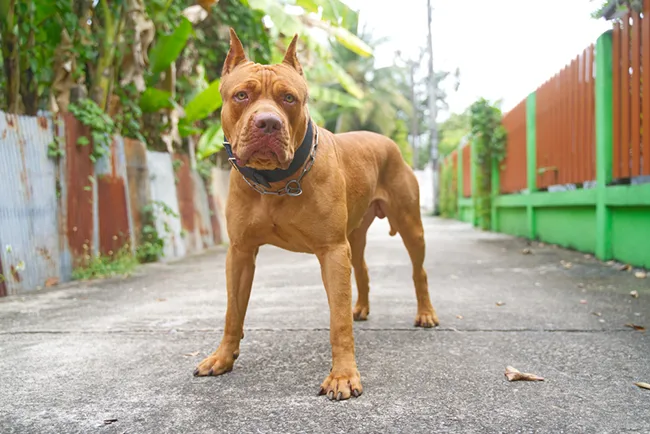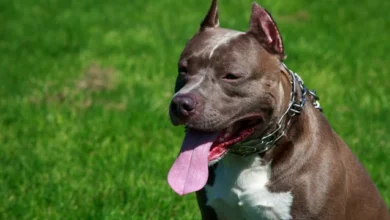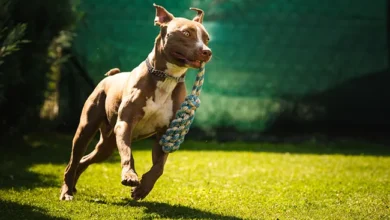
Pitbulls, often misunderstood and unfairly labeled, stand out in the canine world for their remarkable muscular build and distinctive physical traits. It’s crucial to note that the term “Pitbull” doesn’t refer to a single breed but encompasses a group of breeds, including the American Pit Bull Terrier, American Staffordshire Terrier, and Staffordshire Bull Terrier. In this exploration, we delve into the fascinating world of muscular pitbull breeds, examining their anatomy, differentiating traits, temperament, and the critical role of responsible ownership.
What Breed Of Pitbull Is Muscular?
Among the various pitbull breeds, the American Pit Bull Terrier is often recognized for its particularly muscular build. Additionally, the American Staffordshire Terrier and Staffordshire Bull Terrier are also known for their strength and well-defined muscles. It’s important to note that the term “Pitbull” encompasses a group of breeds, and individual dogs within these breeds may vary in their muscularity. Factors such as genetics, nutrition, and exercise play significant roles in determining the level of muscular development in these dogs. Responsible ownership, including proper care and training, contributes to the overall health and physique of pit bulls, regardless of the specific breed within the pitbull category.
I. The Anatomy of Muscular Pitbulls
Pitbulls are renowned for their muscular physique, characterized by well-defined muscles, a broad chest, and a powerful jaw structure. Their physical strength is a testament to their genetic makeup, with generations of selective breeding contributing to these impressive attributes. These dogs exhibit a balance between agility and power, making them versatile and formidable.
II. Differentiating Pitbull Breeds
Each pitbull breed possesses unique characteristics that set them apart while sharing the common thread of a robust build. The American Pit Bull Terrier, known for its agility, strength, and determination, is often recognized for its muscular appearance. The American Staffordshire Terrier, a cousin to the Pit Bull, combines strength with grace. The Staffordshire Bull Terrier, smaller in size but not lacking in strength, completes the trio. Despite the differences, all these breeds exhibit the muscular traits associated with pitbulls.
III. Temperament and Behavior
Contrary to prevailing stereotypes, pitbulls are not inherently aggressive. The key factors influencing their temperament are responsible ownership, proper training, and socialization. When raised in a loving environment with consistent discipline, pitbulls are known for their loyalty, friendliness, and affectionate nature. These traits make them excellent family pets and companions.
IV. The Importance of Responsible Ownership
The responsibility of owning a pitbull extends beyond appreciating their physical prowess. Training, socialization, and a nurturing environment play pivotal roles in shaping a pitbull’s behavior. Owners must invest time and effort into building a strong bond with their pets, ensuring they grow into well-mannered and balanced individuals. This commitment is fundamental to countering negative stereotypes associated with pitbull breeds.
V. Addressing Controversies
Pitbulls have been the subject of unwarranted controversies, often resulting in breed-specific legislation (BSL). By examining the facts and dispelling myths surrounding pitbull aggression, it becomes evident that these dogs are not inherently dangerous. Public perception can be positively influenced through education, highlighting responsible ownership practices and the positive attributes of these breeds.
VI. Famous Muscular Pitbulls
Several pitbulls have gained fame for their exceptional strength and athleticism. From working roles in search and rescue to notable appearances in the media, these dogs showcase the incredible capabilities of pitbull breeds. Highlighting their achievements contributes to a more balanced understanding of these remarkable canines.
VII. Legal Considerations
The debate surrounding breed-specific legislation remains a contentious issue. While some jurisdictions have implemented BSL targeting pitbull breeds, others recognize the inadequacy of such measures. Promoting responsible ownership, education, and community engagement emerges as a more effective strategy in fostering a harmonious relationship between pitbulls and their human counterparts.
Read More: American Pit Bull Breeder
Conclusion
In conclusion, the muscular allure of pitbull breeds goes beyond mere physicality. Understanding and appreciating these dogs require a nuanced perspective that considers their unique traits, the impact of responsible ownership, and the debunking of prevailing myths. By embracing these aspects, we can foster a more compassionate and informed approach towards pitbulls, celebrating their strength, loyalty, and the positive contributions they make as beloved members of countless families.



